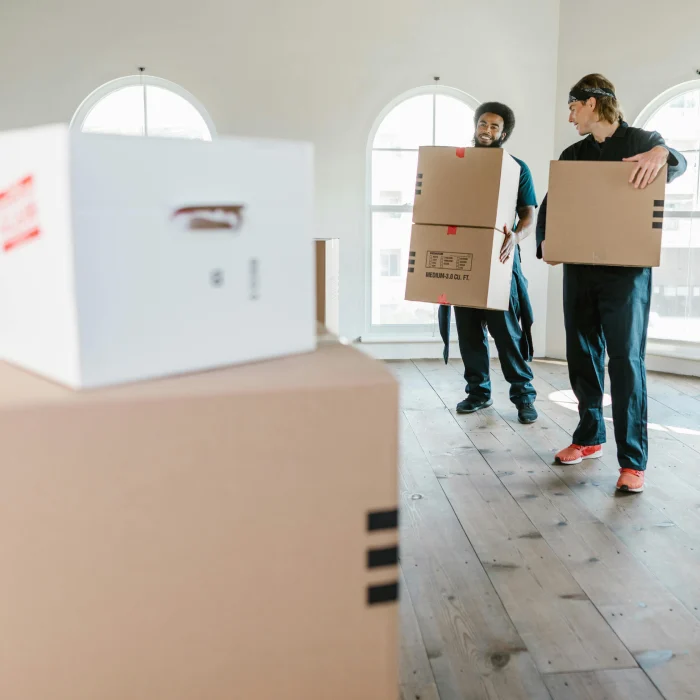Moving to a new home can be one of the most exciting experiences in life, but it can also be overwhelming—especially when it’s a long-distance move. With careful planning and preparation, however, you can make your long-distance move as smooth and stress-free as possible. Whether you’re relocating for work, family, or other reasons, these top tips can help you navigate the complexities of a long-distance move and ensure that everything goes as planned.
1. Start Early and Plan Ahead
One of the most important tips for a successful long-distance move is to start planning as early as possible. Moving is not something you should leave to the last minute, as there are many details that require attention in advance.
Start by creating a moving checklist that includes tasks such as:
- Researching and hiring a reliable moving company
- Sorting through your belongings and deciding what to keep or donate
- Organizing your packing supplies
- Transferring utilities and changing your address
- Scheduling the moving day
It’s recommended to begin the process at least two months before your move, particularly if you’re moving across the country or to another state. This will give you enough time to tackle all the logistics and reduce the stress of waiting until the last minute.
2. Hire a Professional Moving Company
For a long-distance move, hiring a professional moving company is essential. Professional movers have the experience, knowledge, and resources to handle the complexities of long-distance relocation. They can safely transport your belongings and ensure that everything arrives on time.
When choosing a moving company, take the time to research and compare options. Look for companies with experience in long-distance moves, good reviews, and proper licensing. Be sure to get estimates from at least three moving companies and ask them to outline all the services they offer, including packing, loading, and unloading.
A reliable moving company will also offer insurance options in case any of your items are damaged or lost during the move. This peace of mind is essential, especially when you’re moving valuable or fragile items.
3. Declutter and Downsize
Moving offers a perfect opportunity to declutter and downsize. Before you start packing, go through each room in your home and decide what you really need. The less you have to move, the less you’ll have to pay for the move, and the less time it will take to pack and unpack.
Consider donating, selling, or recycling items that no longer serve a purpose. If you have large furniture or appliances you don’t plan to take with you, consider selling or giving them away before the move. Not only will this make your long-distance move easier, but it will also help you start fresh in your new home.
4. Label Everything
When you’re packing, make sure to label every box clearly. This will save you time and frustration when you arrive at your new home. Be specific when labeling boxes with the contents and the room they belong in. For example, instead of just writing “kitchen,” write “kitchen – pots and pans.”
Labeling boxes will also help your moving company handle the items with care, knowing which boxes are more fragile or need special attention. It will also make unpacking much more efficient, as you can easily find the items you need when you arrive at your destination.
5. Pack an Essentials Box
On moving day, you’ll want to have access to certain essential items—especially if your long-distance move takes several days. Pack an “essentials box” with all the items you’ll need right away upon arrival, including:
- Toiletries (toothbrush, toothpaste, soap, etc.)
- Cleaning supplies (paper towels, all-purpose cleaner, trash bags)
- Phone chargers
- Snacks and bottled water
- Medications and personal items
- Important documents (driver’s license, passport, insurance papers)
Make sure this box is easily accessible and not packed with the rest of your belongings. This will ensure that you don’t have to dig through boxes to find the basics when you first arrive.
6. Take Inventory of Your Belongings
Before the movers arrive, it’s a good idea to take an inventory of everything you are moving. This helps you keep track of your belongings during the move and provides a reference in case something goes missing or is damaged.
Create a list of your items, and take photos of valuable or fragile items. This will be helpful if you need to file a claim with your moving company or insurance provider.
7. Transfer Utilities and Change Your Address
Another crucial step in preparing for a long-distance move is to transfer your utilities and change your address in advance. This includes:
- Electricity, water, and gas service
- Internet, cable, and phone services
- Bank accounts and credit card information
- Driver’s license and vehicle registration
- Subscriptions (magazines, newspapers, etc.)
Contact your utility providers and service companies at least two to three weeks before your move to arrange for disconnection and reconnection. Also, don’t forget to change your address with the postal service to ensure that your mail is forwarded to your new address.
8. Prepare for the Travel to Your New Home
If your long-distance move involves travel to a new city or state, it’s important to plan for the journey. Depending on the distance, you may need to book transportation for yourself and your family. Consider whether you’ll be driving or flying to your new home.
If you’re driving, make sure your vehicle is in good condition for the trip. Pack snacks, entertainment, and water for the journey, especially if you’ll be on the road for several days. For those flying, arrange for temporary accommodations until you arrive and settle into your new home.
9. Unpack Efficiently
Once you arrive at your new home, unpacking can feel like a daunting task. To make the process easier, unpack the most essential items first, such as bedding, kitchenware, and toiletries. These will help you feel more at home as you settle in.
Take your time with the rest of the unpacking. Start with one room at a time, focusing on setting up the rooms you’ll use most frequently. This will help prevent overwhelm and allow you to gradually adjust to your new environment.
10. Take Care of Yourself During the Move
Moving can be stressful, and it’s easy to forget about your well-being during the process. Make sure to take care of yourself both physically and mentally. Get plenty of rest, drink enough water, and eat healthy meals during the packing and moving process.
Ask for help when needed, and don’t be afraid to delegate tasks. A long-distance move can be physically exhausting, so it’s important to pace yourself and take breaks when necessary.
Why Choose Seville Movers for Your Long-Distance Move
When it comes to long-distance moving, you need a moving company that you can trust to handle the logistics, ensure your belongings arrive safely, and provide exceptional service. Seville Movers offers all of this and more.
Professional Expertise: With years of experience in long-distance moving, our team has the expertise to handle even the most complex moves. We understand the unique challenges of long-distance relocation and work with you to ensure everything goes smoothly.
Reliable Service: We are committed to providing reliable service and meeting all your moving needs. Our movers arrive on time, efficiently load your belongings, and make sure they are delivered safely to your new home.
Affordable Pricing: At Seville Movers, we offer competitive pricing without compromising on the quality of service. We provide transparent quotes and work within your budget, ensuring you get the best value for your move.
Fully Insured: We take the safety of your belongings seriously. Our moving services are fully insured, giving you peace of mind knowing that your items are protected during the entire journey.
Choose Seville Movers for a seamless and stress-free long-distance move. Contact us today for a free quote!




